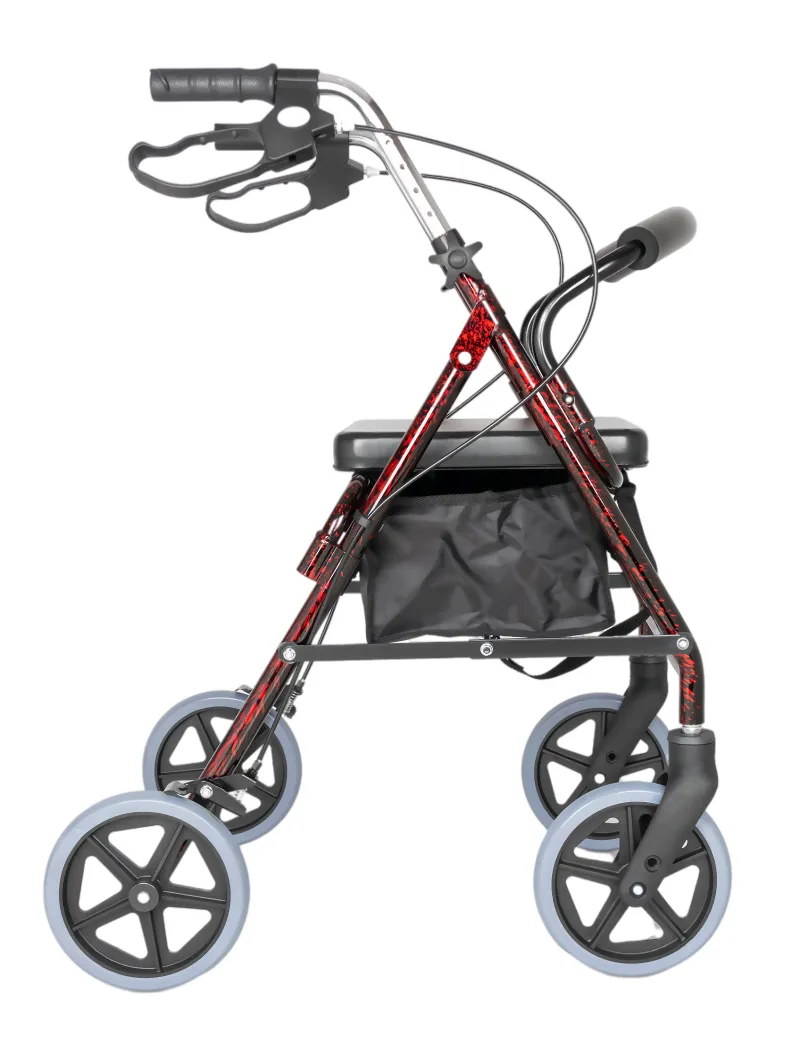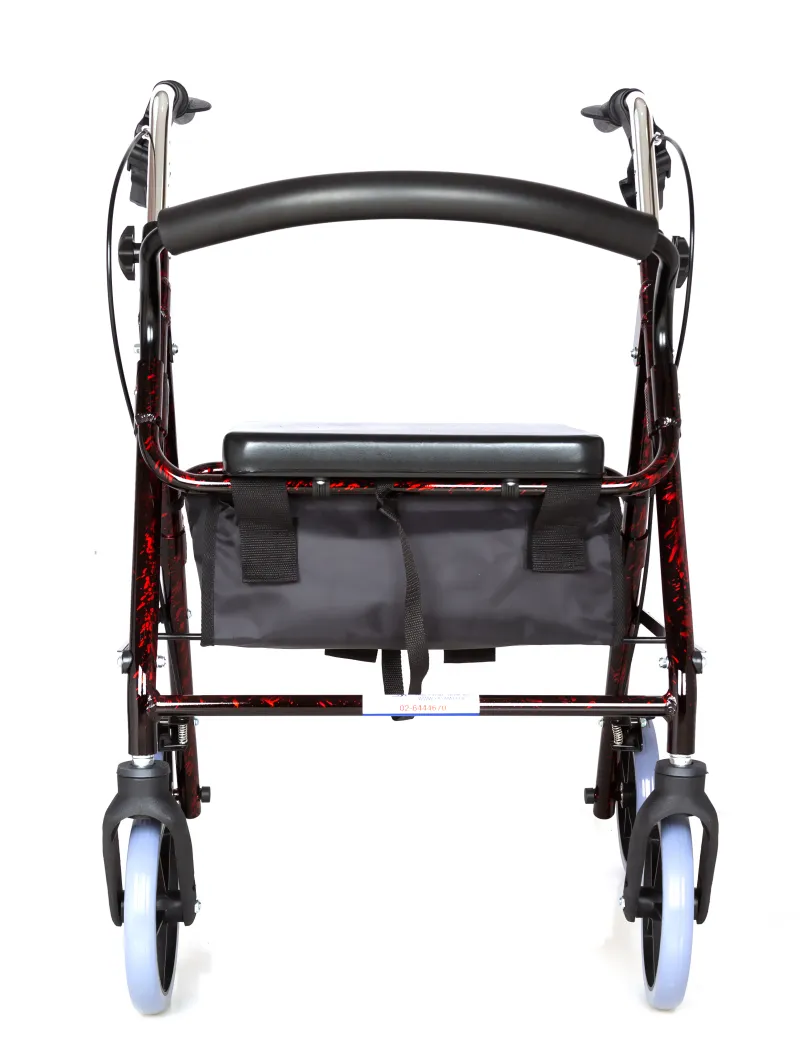
What should you pay attention to when using rollator walker?
2024-05-27 15:30
As an important auxiliary tool, the rollator walker plays a key role in providing assistance to people with limited mobility. However, proper use of a rollator walker is essential to ensure the safety and comfort of the user.
This article will focus on the question "What should you pay attention to when using a rolling walker?", introduce in detail the correct use of the rollator walker, and discuss how to use the rollator walker in daily life to improve the stability and safety of walking.
What should you pay attention to when using rollator walker?
The rollator walker is a common walking aid suitable for the elderly or people with limited mobility. Proper use of a rollator walker can not only improve walking stability, but also reduce the risk of falls and injuries.
Brake control: When using the rollator walker, you should pay attention to controlling the brakes. When going up or down stairs or ramps, make sure the brakes are on to prevent falls. Before walking, the brake should be released to ensure the free movement of the rollator walker.
Correct walking posture: When pushing the rollator walker, the user should stand behind the rollator walker, push the rollator walker forward and keep an appropriate distance from it. Avoid placing aids too far in front of the rollator walker to prevent overextension and loss of balance.
Reasonable selection of rollator walker: Choose the appropriate rollator walker according to personal height and weight. A rollator walker that is too high or too low will affect the comfort and stability of walking.
Precautions when walking: When using the rollator walker, keep the same pace with both feet and do not step too far inside the rollator walker. In addition, pay attention to the surrounding terrain and obstacles to ensure safe walking.
By mastering these precautions, users can better use the rollator walker and improve walking safety and comfort.

What are the types of rollator walkers?
There are various types of rollator walkers, designed according to different needs and scenarios. It is important for users to understand the types of rolling walkers and how to choose the right rolling walker.
Four-wheel rollator walker: A four-wheel rollator walker is usually equipped with a seat and storage basket and is suitable for long walks and resting. It has high stability and is suitable for outdoor use.
Three-wheeled rollator walker: The three-wheeled rollator walker is more flexible and suitable for use in narrow spaces or indoors. It usually comes with a storage bag for easy carrying of items.
Wheelless rollator walker: Wheelless rollator walker is suitable for walking on flat ground and is suitable for users with good mobility.
How to choose a suitable rolling walker: When choosing a rolling walker, you should choose the appropriate type according to your personal needs and usage scenarios. Consider factors such as your own balance ability, range of activities, and usage environment.
Trial and Adjustment: Before purchasing a rollator walker, you should trial it to ensure that its height, width, and other parameters meet your personal needs. Adjust the height and settings of the rollator walker according to the trial situation to get the best experience.
By understanding the types and selection criteria of rollator walkers, users can choose the rollator walker that best suits their needs and improve walking stability and comfort.

How to properly maintain and maintain a rollator walker?
Proper maintenance and care of your rollator walker will not only extend its life, but also ensure the safety and comfort of the user. Here are some suggestions for maintaining and maintaining your rollator walker:
Regular inspection: Regularly check the brakes, wheels, handrails and other parts of the rolling walker to ensure normal operation. If any problems are found, they should be repaired or replaced in time.
Cleaning and maintenance: Clean the rolling walker regularly, especially the wheels and handrails. Avoid storing the rolling walker in a damp or dirty environment.
Wheel care: Make sure your wheels are kept clean and free of foreign matter. If the wheels are severely worn, they should be replaced in time.
Storage method: When the rollator walker is not in use, it should be stored in a dry and safe place away from direct sunlight and moisture.
Owner's Manual: Read and follow your rolling walker's owner's manual for specific maintenance and care recommendations.
By properly maintaining and maintaining the rollator walker, users can ensure that it continues to operate stably and provide better walking assistance.
Summarize
Rollator walkers play an important role in helping people with mobility issues walk. By properly using, selecting and maintaining a rollator walker, users can ensure walking stability and safety. It is crucial for users to understand the types and selection criteria of rollator walkers, as well as the correct maintenance methods. We hope that the suggestions and information provided in this article can help readers better use rolling walkers and improve their quality of life.








